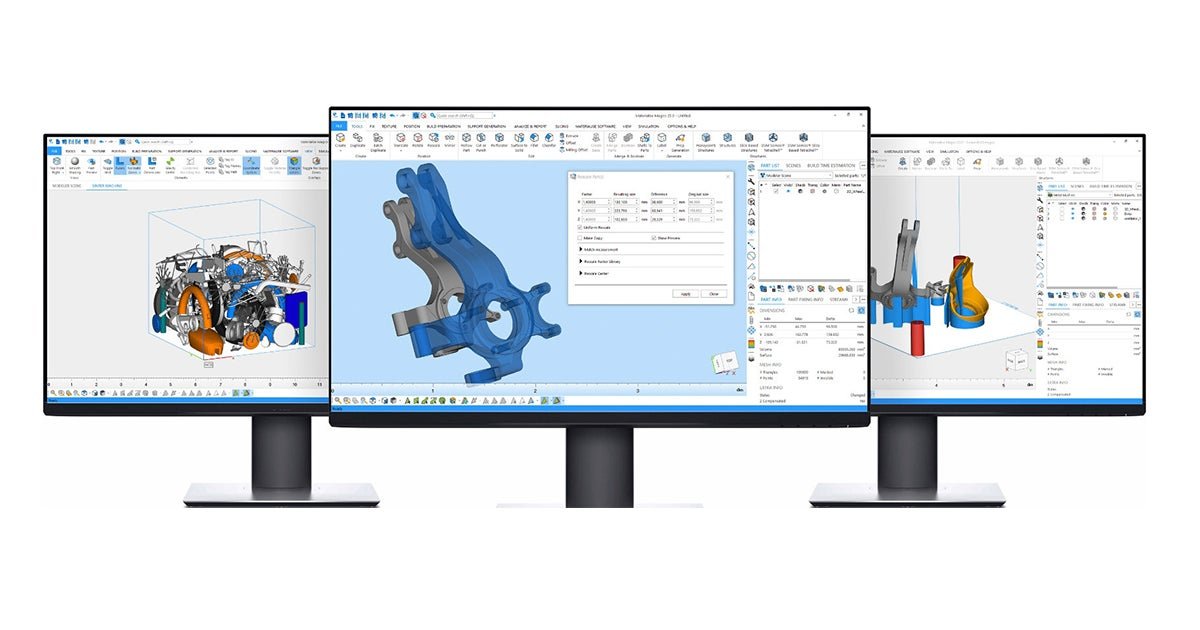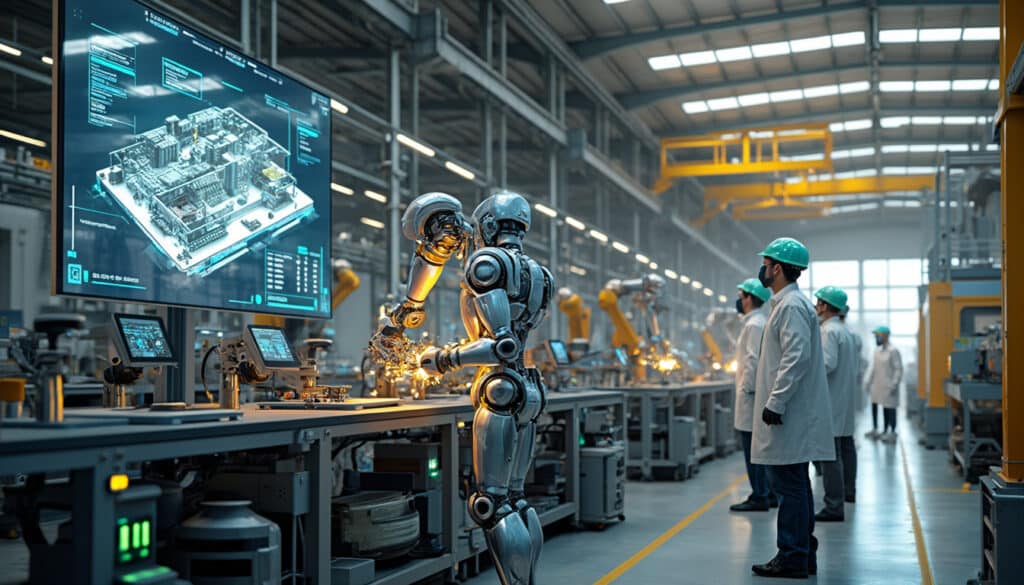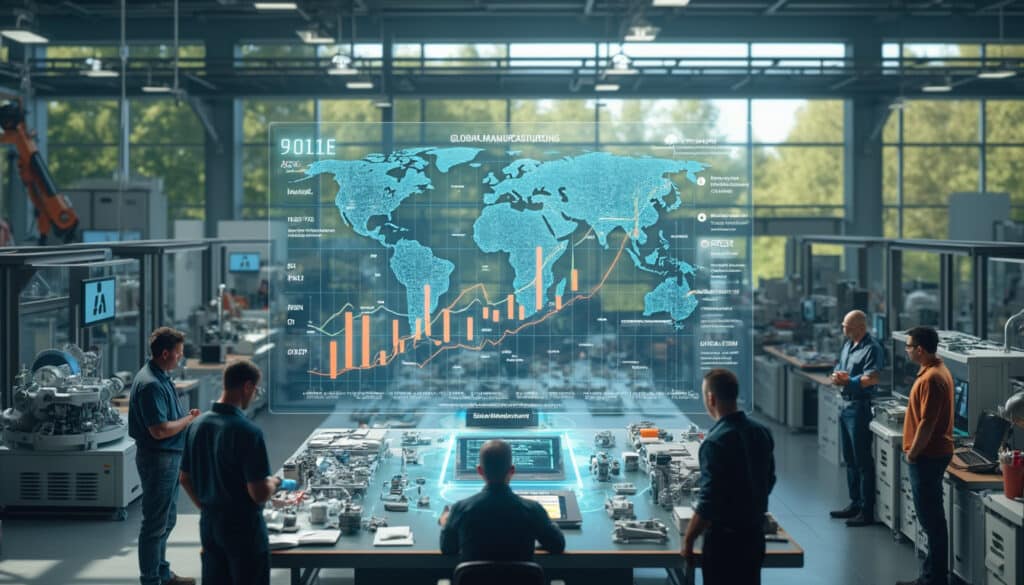
Since 2014, the emergence of Industry 4.0 has transformed the industrial landscape through the integration of new digital technologies. Among these innovations, 3D printing stands out as an essential pillar. At the same time, machine learning plays a crucial role by enabling machines to improve their performance autonomously. The integration of these two technologies promises to revolutionize manufacturing processes, offering unprecedented flexibility and customization.

Industry 4.0 marks a new era in the field of manufacturing, relying on advanced technologies like machine learning and 3D printing. This synergy allows for a significant improvement in flexibility, customization, and efficiency of industrial processes. In this article, we will explore how these two technologies complement each other to redefine the standards of industrial production.
Table des matières
ToggleThe Importance of 3D Printing in Industry 4.0
Since 2014, Industry 4.0 has marked the beginning of an intense digital transformation of industrial operations. 3D printing has become one of the major pillars of this revolution, redefining manufacturing capabilities. Thanks to it, companies benefit from increased flexibility and product customization at a level never achieved before.
Machine Learning: A Catalyst for Efficiency
The integration of machine learning within 3D manufacturing processes has pushed the boundaries of innovation even further. This technology refers to the ability of computers to learn and improve on their own, without direct human intervention. By using sophisticated algorithms, machines can analyze massive amounts of data to optimize their performance and reduce errors.
Optimization of Production Processes
One of the main advantages of machine learning in 3D printing is the optimization of production processes. By analyzing real-time collected data, systems can identify inefficiencies and make instant adjustments. This leads to a faster and more cost-effective production while minimizing material waste.
Improvement of Customization
Customization of products is another area where machine learning makes a significant difference. Algorithms can learn from customer preferences and automatically adjust production parameters to meet specific needs. This paves the way for tailored solutions, whether in the automotive, healthcare, or aerospace sectors.
The Synergy Between Big Data and 3D Printing
Industry 4.0 also relies on the use of technologies such as Big Data and Cloud to project efficiency to another level. Data collected during the manufacturing process is analyzed in real time, allowing for informed and swift decision-making. This results in continuous improvement in productivity and a reduction in errors, thanks to the predictive analysis offered by Big Data.
Prediction and Preventive Maintenance
Machine learning algorithms can also be used to predict potential failures and optimize equipment maintenance. By analyzing historical performance data, systems can detect early signs of failures and schedule maintenance interventions before issues arise. This preventive approach reduces downtime and extends the lifespan of machines.
Concrete Applications in Industry
Concrete applications of machine learning in 3D printing are numerous and varied. Whether in the manufacturing of complex automotive parts, the creation of custom medical prosthetics, or the production of high-precision aerospace components, this technology opens up infinite possibilities. Industries thus benefit from an increased ability to innovate and meet the growing demands of modern markets.
The integration of machine learning in 3D printing represents a major advancement for Industry 4.0. By combining these technologies, companies can not only improve their efficiency but also customize their products and predict problems before they arise. Through this synergy, we are witnessing a true revolution in the field of industrial manufacturing.
- Process Optimization – Thanks to machine learning, 3D printing can analyze thousands of simulations to optimize production parameters.
- Error Reduction – By using pattern recognition algorithms, 3D printers can detect and correct anomalies in real time.
- Customization of Manufacturing – The capabilities of machine learning allow for tailoring products to the specific needs of each customer.
- Improvement of Flexibility – Artificial intelligence allows for quickly modifying 3D models based on collected data, thus increasing production flexibility.
- Resource Management – Big Data and cloud technologies can be used for optimized management of materials and energy.
- Predictive Maintenance – Machine learning can predict the maintenance needs of 3D printers, reducing downtime and related costs.
Je me lance dans mon business d'impression 3D et je vends les machines d'atout.
— Kenshin9977 (@Kenshin9977) August 25, 2024
Pour la modique somme de 400€ vous pourrez avoir Mastodonte (échelle 1:100) https://t.co/tTOGo70tvO pic.twitter.com/Q3c4EyHaqF





